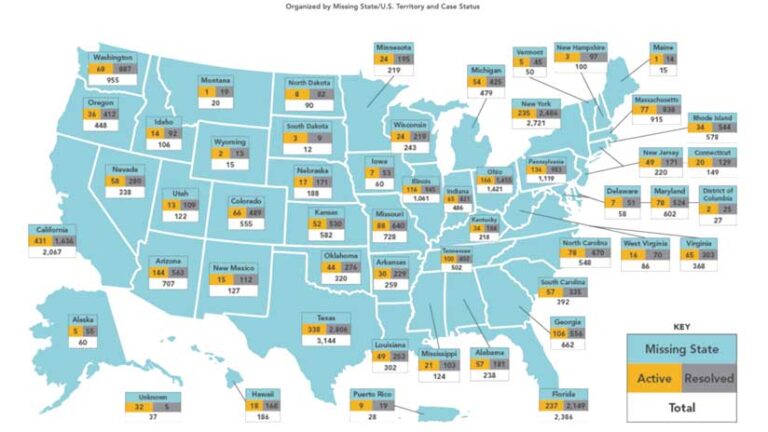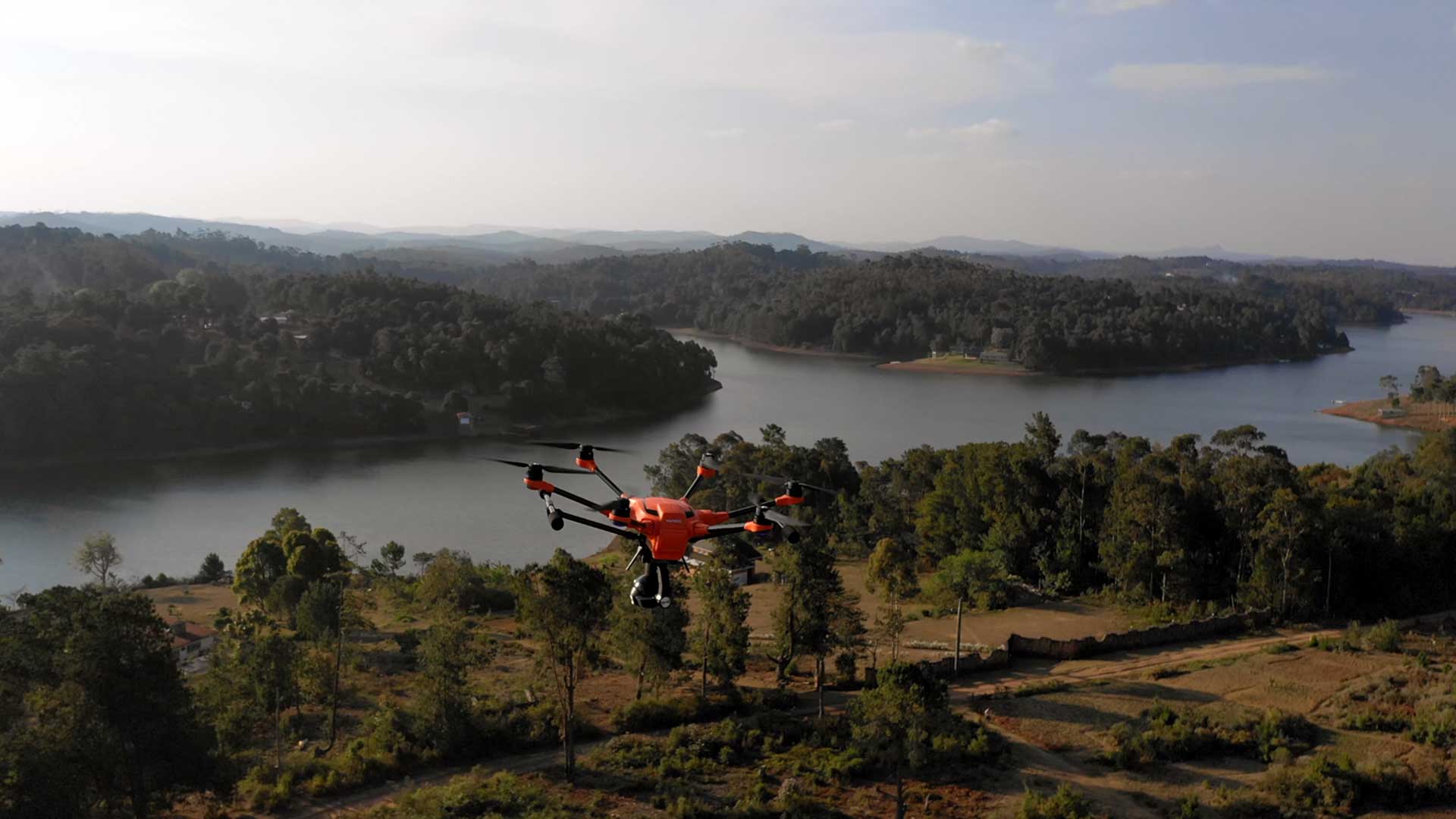The surreptitious nature of child sex trafficking makes it difficult to locate and protect children and track down those who exploit them. Offenders keep children on the move and often cross jurisdictional lines. Analysts at the National Center for Missing & Exploited Children (NCMEC) use GIS to track child traffickers and missing children.
NCMEC is a private, nonprofit 501(c)(3) corporation devoted to recovering missing children, reducing child sexual exploitation, and preventing child victimization. It has the largest data repository on cases of missing children in the United States.
NCMEC has taken a data-centric approach to its work that empowers cross-agency collaboration. Driven by the core belief that every child deserves a safe childhood, NCMEC staff members apply advanced analytics to help find missing children and support law enforcement efforts to hold offenders responsible for their victimization.

From its inception, NCMEC has taken a geographic approach, using maps to understand the many dimensions of this problem. Recently, NCMEC analysts adopted real-time maps to support operations that bring together multiple law enforcement agencies working to recover missing and exploited children.
Powered by GIS, the center’s Missing and Recovered map and dashboard deliver important details to each investigator, including aggregated data from social media, online ads, and other leads. In the past, NCMEC reports for each child were 30- to 40-page PDFs. This made sorting information and finding key details difficult. GIS has enabled law enforcement to leverage real-time leads and information that resulted in the successful recovery of children who were actively being exploited through child sex trafficking.
“Missing and exploited child operations conducted by law enforcement involve multiple agencies working on a common mission in a shared space engaging in real-time collaboration and deconfliction,” said Melissa Snow, executive director of NCMEC’s Analytical Services Division, Child Sex Trafficking Programs. “The maps provide a comprehensive and concise visual representation, sharing information about the child, indicators of possible victimization, and consolidated information to use as leads in locating them.”
Tracking Down Child Traffickers
The constantly updated dashboards and maps have made a difference. Law enforcement officers can get current actionable data and see progress. Often, the information they need is related to a public event, such as a convention or sporting event, that is held at a specific location. As those involved in child sex trafficking try to evade law enforcement, geography can play a role in recovering missing and exploited children.
“There are a lot of components of movement and geography that can play a role in the crime of child sex trafficking to evade law enforcement,” Snow said. “By mapping the data, we can start to see actively missing kids slowly making their way to a venue. Let’s say an event is happening in a southern state, and you have a kid that is actively being advertised online in a northern state. Over days, we see the geographic location of those online ads move toward that event.”
When a law enforcement agency requests resources from NCMEC, Snow’s team pulls together a dashboard with all the details reported to NCMEC about actively missing children the team thinks might be traveling toward a venue. The largest category of missing children reports NCMEC receives are children who have run away from child welfare or foster care and who have experienced a disrupted home life.
“Traffickers take advantage of that lack of connection, that lack of love and belonging,” Snow said. “All the things that a young person is searching for becomes a way to target them for trafficking.”
Analytical resources—both staff and access to tools—can vary widely between law enforcement agencies, but NCMEC fills that gap. Acting as a national clearinghouse, NCMEC has specialized and dedicated analytical teams to support law enforcement efforts to identify and locate missing and exploited children. These specialized analysts combine their expertise in identifying child sex trafficking online with access to dozens of donated analytical resources and tools. These two things allow NCMEC analysts to further develop information into more actionable leads to locate missing children or identify child sex traffickers.
“We can identify and then question why a bunch of kids go missing here and are recovered there,” Snow said. “It helps us better target our questions and then figure out, ‘Is there a trend or pattern here that we need to be looking further into?’”
Fighting Exploitation in Neighborhoods and Online
Of the more than 25,000 missing children cases reported to NCMEC in 2022, 1 in 6 had run away and was likely the victim of child sex trafficking. Though people want to think this doesn’t happen in their community, NCMEC tries to dispel that misconception.
“Unfortunately, we know that child sex trafficking is occurring in every type of community, big and small, rural and urban, including tribal land,” Snow said. “We’ve received reports from every single state and every type of community and territory across the United States.”
Traffickers use the internet to meet children and then learn about vulnerabilities they can target. Many young people are quick to trust and share personal information online. Traffickers target their victims by portraying themselves as having the same likes and dislikes as the child or having a lavish and enticing lifestyle.
“In the pre-internet days, traffickers had to do that one-to-one. They had to create a physical connection and that made them more visible,” Snow said. “With social media they can sit in the comfort and protection of their home. They can be sitting in Washington, DC, and recruiting kids in California, Michigan, Wisconsin, and South Carolina simultaneously.”
Through an online recruitment process, traffickers build connections with children in foster care who likely have friends in the system, and then take advantage of those connections to develop a network of children to target. They also use the internet to advertise and sell children.

Extending Expertise on Cases and Vulnerabilities
In the past 39 years, NCMEC has assisted law enforcement, families, and child welfare with more than 400,000 cases of missing children. NCMEC also operates the CyberTipline, a global mechanism for reporting instances of suspected child sexual exploitation. Since its inception in 1998, the CyberTipline received more than 144 million reports. This data, combined with the organization’s analytical skills, supports NCMEC’s role as the nation’s clearinghouse and resource center for information about missing and exploited children. NCMEC connects various agencies, organizations, and companies that are working on these issues.
“One of the things that we have been absolutely critical on is deconfliction,” Snow said. “Our missing child and CyberTipline databases hold millions of pieces of information that we can deconflict against and make connections. We routinely get requests from law enforcement to run a name in our system and often there is a hit, a potential missing piece of the puzzle that can lead to identifying an offender or locating a child.”
The missing child map and dashboard include places where children have been previously recovered. NCMEC’s location analysis has expanded to include known gang involvement in child sex trafficking, which has become a worrying phenomenon. In 2022, NCMEC tracked 400 cases in which a child went missing and was exploited through child sex trafficking that was associated with a gang.
The dashboard view gives NCMEC and law enforcement agencies hope that they can help those who are suffering. “Everybody can see the 10 missing kids in a specific geographic location on the dashboard, and when those numbers shift to show eight missing and two recovered, it’s certainly inspiring,” Snow said. “Every time we see that a child is recovered, we celebrate it. You have to celebrate these moments, especially when working on a topic so emotionally challenging.”
But Snow cautions that every recovery is just the beginning of the next chapter for that child.
“There’s this expectation that with recovery of a child that everything goes back to normal, whatever normal is,” Snow said. “There are a lot of traumas before, during, and after, and a lot of healing that needs to happen. At NCMEC, we’re thankful for all these tech tools and analytical resources, but there’s a whole other chapter that happens after every recovery moment.”





